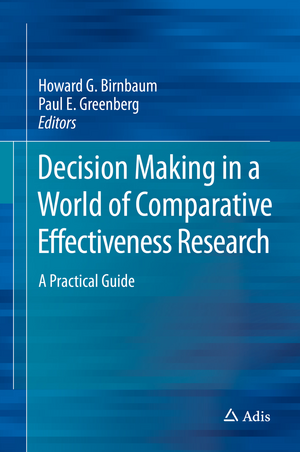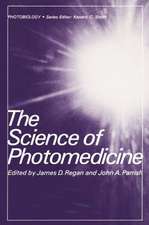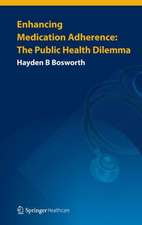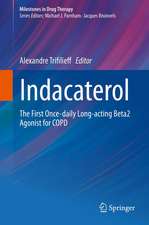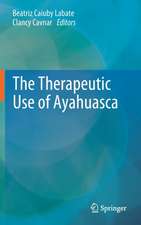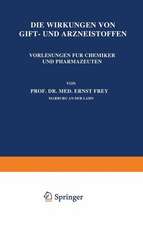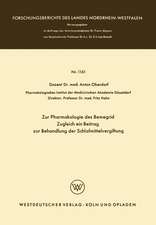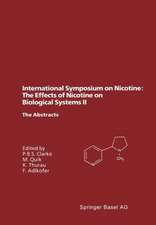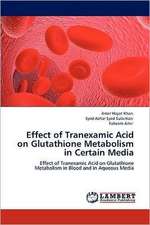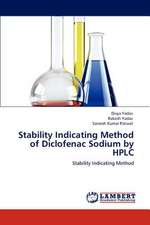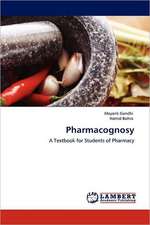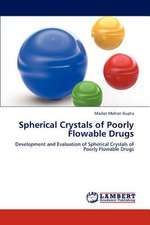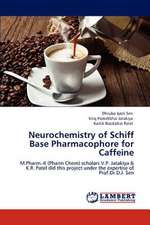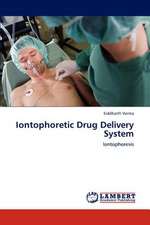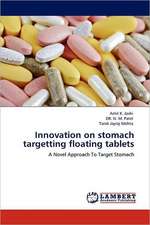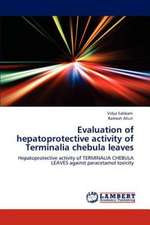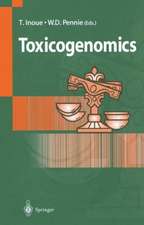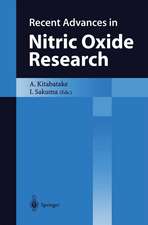Decision Making in a World of Comparative Effectiveness Research: A Practical Guide
Editat de Howard G. Birnbaum, Paul E. Greenbergen Limba Engleză Hardback – 12 mai 2017
| Toate formatele și edițiile | Preț | Express |
|---|---|---|
| Paperback (1) | 771.73 lei 38-44 zile | |
| Springer Nature Singapore – 29 iul 2018 | 771.73 lei 38-44 zile | |
| Hardback (1) | 730.71 lei 3-5 săpt. | |
| Springer Nature Singapore – 12 mai 2017 | 730.71 lei 3-5 săpt. |
Preț: 730.71 lei
Preț vechi: 769.17 lei
-5% Nou
Puncte Express: 1096
Preț estimativ în valută:
139.83€ • 145.11$ • 116.88£
139.83€ • 145.11$ • 116.88£
Carte disponibilă
Livrare economică 22 februarie-08 martie
Preluare comenzi: 021 569.72.76
Specificații
ISBN-13: 9789811032615
ISBN-10: 9811032610
Pagini: 250
Ilustrații: XVI, 289 p. 18 illus., 7 illus. in color.
Dimensiuni: 155 x 235 mm
Greutate: 0.79 kg
Ediția:1st ed. 2017
Editura: Springer Nature Singapore
Colecția Adis
Locul publicării:Singapore, Singapore
ISBN-10: 9811032610
Pagini: 250
Ilustrații: XVI, 289 p. 18 illus., 7 illus. in color.
Dimensiuni: 155 x 235 mm
Greutate: 0.79 kg
Ediția:1st ed. 2017
Editura: Springer Nature Singapore
Colecția Adis
Locul publicării:Singapore, Singapore
Cuprins
I. Introduction.- 1. Introducing Decision Making in a World of Comparative Effectiveness Research.- 2. Perspectives on Decision Making in a World of Comparative Effectiveness: Views from Diverse Constituencies.- II. The Future of CER for Evidence Developers: Perspectives from Pharmaceutical Decision Makers.- 3. Perspectives on the Use of CER by Life Sciences Executives: An Interview with Mike Bonney.- 4. Perspectives on the Use of CER by Life Sciences Executives: An Interview with a Senior Executive at an International Life Science Company.- 5. CER: A Pharmaceutical Industry Perspective on Outlook, Dilemmas, and Controversies.- 6. Impact of Comparative Effectiveness Research on Drug Development Strategy and Innovation.- 7. Pricing of Pharmaceuticals: Current Trends and Outlook, and the Role of CER.- III. Evolving Stakeholder Considerations: Patients, Physicians, Regulators and Payers.- 8. Are Real-World Data and Evidence Good Enough to Inform Healthcare and Health Policy Decision Making?.- 9. Translating CER Evidence to Real-World Decision-Making: Some Practical Considerations.- 10. Decision Making by Public Payers.- 11. Patient and Stakeholder Engagement in Designing Pragmatic Clinical Trials.- 12. Policy Considerations: Ex-U.S. Payers and Regulators.- 13. Perspectives on the Common Drug Review (CDR) Process at the Canadian Agency for Drugs and Technologies in Health (CADTH).- 14. Evaluating Non-Pharmaceutical Technologies at the Canadian Agency for Drugs and Technologies in Health (CADTH).- 15. Challenges and Opportunities in the Dissemination of CER Information to Physicians and Payers: A Legal Perspective.- 16. Legal Considerations in a World of CER.- IV. Emerging Challenges, Methods and Applications of CER: Real-world and Big Data.- 17. Application of CER to Promote Adherence to Clinical Practice Guidelines.- 18. Challenges in Developing and Assessing CER for Medical Technology.- 19. Evidence Generation Using Big Data: Challenges and Opportunities.- 20. Indirect Comparisons Using Clinical Trial Data: 5 Years Later.- 21. Decision-Making with Machine Learning in Our Modern, Data-Rich Healthcare Industry.
Recenzii
“This ‘Practical Guide’ provides valuable insights on how CER is or can be used by different stakeholders for different types of decisions. … I can highly recommend this thought-provoking collection; it would be of interest to anyone with an interest in how we have gotten to where we are with CER, and how we can best proceed. HEOR researchers and health system stakeholders … would benefit from this wealth of information, insights, and prescriptions.” (Lou Garrison, Value & Outcomes Spotlight, September-October, 2017)
Notă biografică
Dr. Birnbaum is a Principal at Analysis Group. Dr. Birnbaum’s professional interest is performing economic investigations regarding the comparative effectiveness and value of medical services and products and health economics of specific conditions using real world data from administrative claims files, medical records, and surveys of patients and physicians, as well as clinical trial data. He has conducted health economics and outcomes research across a broad range of physical and mental disorders for pharmaceutical and biotechnology manufacturers, managed care organizations, and government agencies, as well as provided expert testimony and litigation support in matters regarding Medicare and Medicaid reimbursement and managed care issues. Dr. Birnbaum has published numerous articles in leading medical, health economics, and managed care journals on a wide range of conditions. Dr. Birnbaum also serves on the editorial board of PharmacoEconomics, and is a member of the International Society for Pharmacoeconomics and Outcomes Research (ISPOR) Institutional Council.
Mr. Greenberg is the Director of Analysis Group's Health Care Practice and specializes in health economics, both in health outcomes research and in complex business litigation. He consults to pharmaceutical, biotechnology, and medical device companies concerning the health economics profiles of specific diseases and medical products. Mr. Greenberg has overseen cost-of-illness research relating to numerous physical and psychiatric disorders, as well as pharmacoeconomic assessments of the cost-effectiveness of drugs based on data gathered in clinical trials and administrative claims files. Mr. Greenberg also draws upon the methodological tools and data sources used in health outcomes research to analyze problems that emerge in litigation. He currently serves on the editorial boards of PharmacoEconomics, Journal of Medical Economics, and Expert Opinion on Pharmacotherapy.
Mr. Greenberg is the Director of Analysis Group's Health Care Practice and specializes in health economics, both in health outcomes research and in complex business litigation. He consults to pharmaceutical, biotechnology, and medical device companies concerning the health economics profiles of specific diseases and medical products. Mr. Greenberg has overseen cost-of-illness research relating to numerous physical and psychiatric disorders, as well as pharmacoeconomic assessments of the cost-effectiveness of drugs based on data gathered in clinical trials and administrative claims files. Mr. Greenberg also draws upon the methodological tools and data sources used in health outcomes research to analyze problems that emerge in litigation. He currently serves on the editorial boards of PharmacoEconomics, Journal of Medical Economics, and Expert Opinion on Pharmacotherapy.
Textul de pe ultima copertă
In the past decade there has been a worldwide evolution in evidence-based medicine that focuses on real-world Comparative Effectiveness Research (CER) to compare the effects of one medical treatment versus another in real world settings. While most of this burgeoning literature has focused on research findings, data and methods, Howard Birnbaum and Paul Greenberg (both of Analysis Group) have edited a book that provides a practical guide to decision making using the results of analysis and interpretation of CER. Decision Making in a World of Comparative Effectiveness contains chapters by senior industry executives, key opinion leaders, accomplished researchers, and leading attorneys involved in resolving disputes in the life sciences industry. The book is aimed at 'users' and 'decision makers' involved in the life sciences industry rather than those doing the actual research. This book appeals to those who commission CER within the life sciences industry (pharmaceutical, biologic, and device manufactures), government (both public and private payers), as well as decision makers of all levels, both in the US and globally.
Caracteristici
Unique focus on users of CER Insights from industry decision makers paired with practitioner thought leaders Cutting edge technology applied to fundamental industry/policy challenges Assesses promise and realities of CER: past and future Considers both US and ex-US contexts
